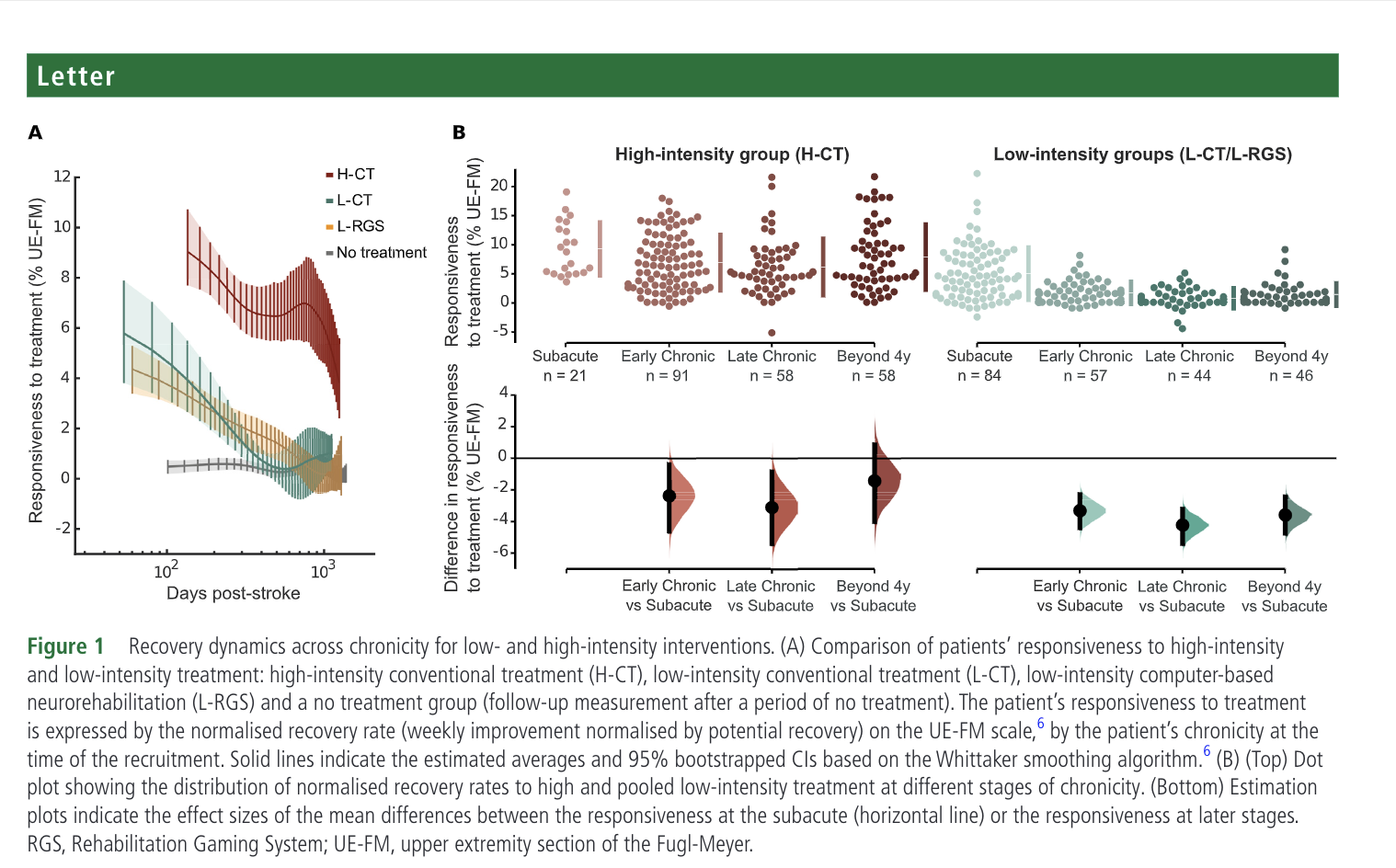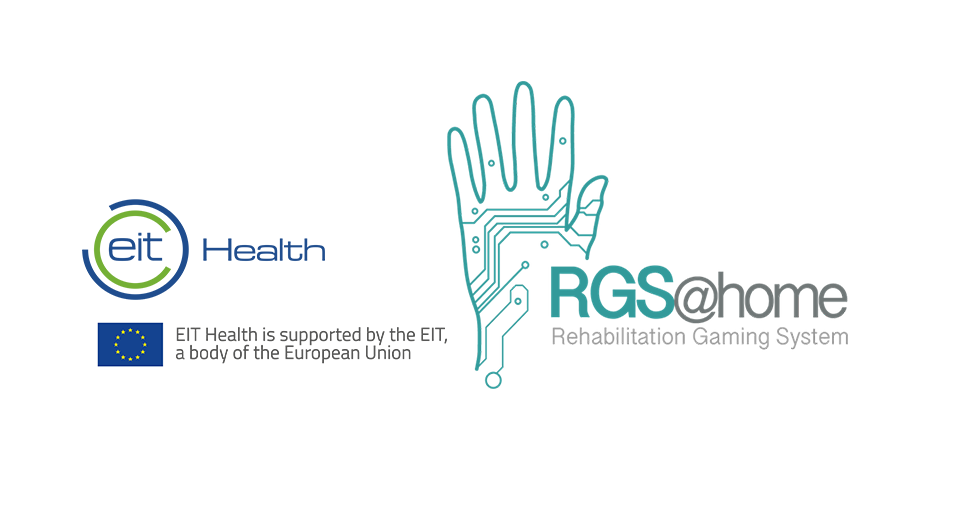RGS@home publication!
RGS@home publication!
RGS News • 29 June 2021
This publication, on recovery post-stroke, highlights the relevance of rehabilitation training volume, the time it should be delivered post-stroke, and how to deliver it.
Relationship between intensity and recovery in post-stroke rehabilitation: a retrospective analysis. Journal of Neurology, Neurosurgery & Psychiatry
Ballester, B. R., Ward, N. S., Brander, F., Maier, M., Kelly, K., & Verschure, P. F. (2021)
Work in animal models suggests high-intensity rehabilitation-based training that starts soon after stroke is the most effective approach to promote recovery.1 In humans, the interaction between treatment onset and intensity remains unclear.2 It has been suggested that reducing daily treatment duration below 3 hours at the acute and subacute stages leads to a poorer prognosis,3 while there may also be an upper bound beyond which high-intensity motor rehabilitation at the acute stage might lead to unwanted side effects.4 Designing optimal rehabilitation treatment programmes for stroke patients will not be possible until we understand ‘how much’, ‘when’ and ‘what’ treatment should be delivered.2 In this retrospective analysis, we assessed patients’ responsiveness to high-intensity and low-intensity rehabilitation protocols across different stages of chronicity post-stroke to address the ‘how much’ and ‘when’ questions.

